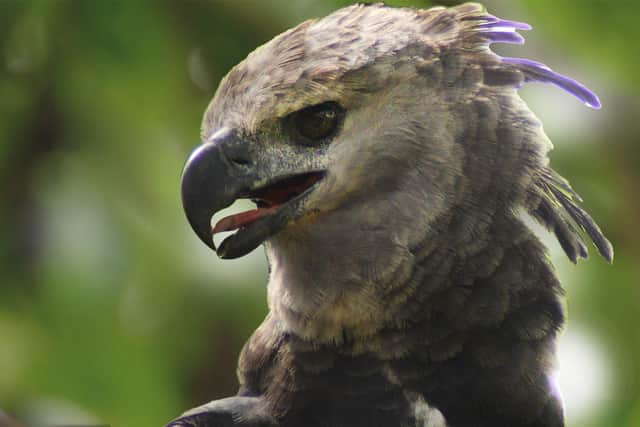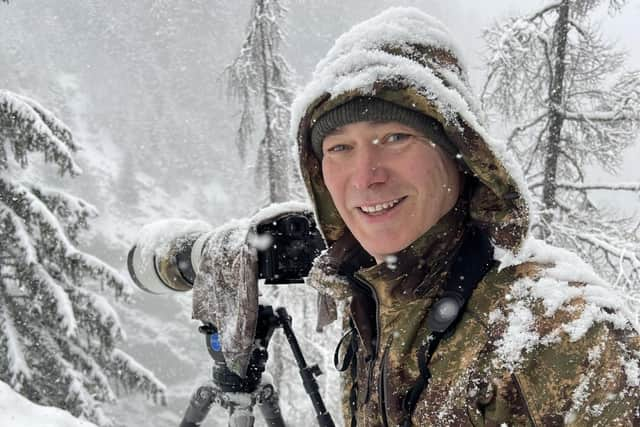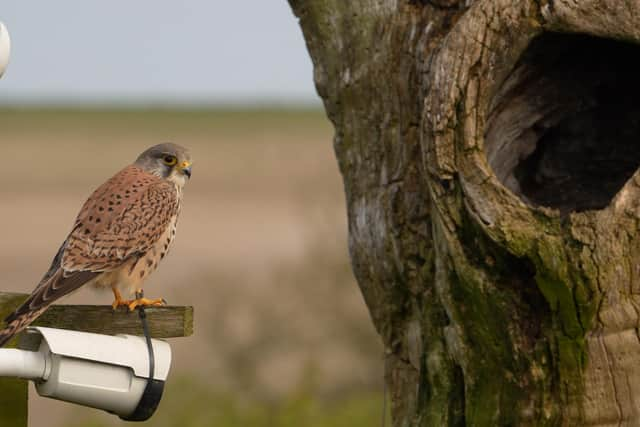Robert Fuller: From being branded feral as a child to leading nature and wildlife photographer and artist
It is easily arguable that he has since learned more about nature, wildlife and the environment than five years in secondary school ever would have taught.
Severely dyslexic, he struggled to write until he was 35, but has now has created a career and a successful business out of a subject that became his life and passion.
Advertisement
Hide AdAdvertisement
Hide AdWhen we spoke, Fuller was not long since back from a trip to the French Alps to film black grouse.


The mere observer may look at a picture, watch a clip of what he has filmed and think that’s ‘cute’.
What is lesser understood, is the time, effort and financial cost that goes into observing some of the world’s most intriguing and rarer animals.
Fuller has a million views a day on his social media channels, 60 million on Facebook a month and YouTube has 12 million views a month.
Advertisement
Hide AdAdvertisement
Hide AdThen there is the gallery in a small and rural part of East Yorkshire, near Malton, that has barely 200 people living there.


Yet, the studio at Thixendale is where more than 7,000 people visit each year to view his work and maybe take a piece of it home.
His art is sold all over the world and has been adopted by the RSPB and the National Trust. In addition he writes a monthly column for The Yorkshire Post.
He said: “It is massive when you think about it.”
It doesn’t come easy and has taken years to get to this. And of course, there is no guarantee that after making his way to the French Alps or wherever, that he will see what he has come to film and photograph.
Advertisement
Hide AdAdvertisement
Hide Ad

He said: “We were filming black grouse in a location high up in the mountains which were absolutely stunning. We had a very early start getting up at 2.30am to start the climb at 3am to be in position at 5am with 500 or 600 metres of elevation - on a mountain, in the dark, with a lot of snow.
“I always seek out owls wherever I go. I spent three days looking for pygmy owls, I nearly got beaten by the weather, snow and blizzards. On the third day I got it. It is the smallest owl in Europe and lives in The Alps.”
He has been told it is a glamorous job tripping all over the world, he has been asked why he does it. The answer is two fold.
“It’s hard work, but I love what I do. I travel the world and go to places no one else has been before to pull out the stories of individual animals. I try to uncover their secret worlds and that takes a long time and means trekking for days with heavy equipment in challenging conditions”.
Advertisement
Hide AdAdvertisement
Hide AdIt is the stories about British wildlife - he has more than 100 hidden cameras set up in his garden and countryside surrounding the gallery so he can observe wildlife that visits and relay online to his channels - that has captured the imagination of his followers.
It is a form of education he says - possibly with a nod back to his own issues with school.
“Education is exactly what I am trying to do in a factual and entertaining way. I have so many comments from people saying they didn’t realise they were interested in wildlife and have got hooked on it. It is like watching a soap opera in a way - I don’t know why they do (watch soap operas) because this is far more interesting.”
Fuller has visited every continent in the world - hot, cold, tropical and rainforest. Other than the Alps, his last big trip was Panama where he filmed the Harpy Eagle - one of the most powerful in the world and one of the most rare.
Advertisement
Hide AdAdvertisement
Hide AdIf he did another trip again, he says it would be the Arctic again. He is going next year. Seeing a polar bear is the “big one”.
Being around some of the biggest, strongest, fastest, most powerful species on earth doesn’t phase him.
“I’ve been charged by hippos and charging buffalos but humans are the most dangerous. I am more at risk in a city than I am with what people think are dangerous animals.”
Studying nature in such detail over more than three decades, he has seen changes such as the demise of Elm and now Ash trees and in turn the effect that has had on nesting birds.
Advertisement
Hide AdAdvertisement
Hide Ad“Our most common birds are not as common anymore”, he says, However, while in his area there never used to be barn owls, now there is a thriving population.
COVID put the brakes on overseas trips and forced him to view UK wildlife in a different way.
“When you go abroad, you just get a snippet of an animal’s life so it is the animals in this country that really catch you. All these animals have fascinating lives and stories.
“Yorkshire is pretty good. We have the coast, moors, Wolds, rivers and they all have different habitats.”
